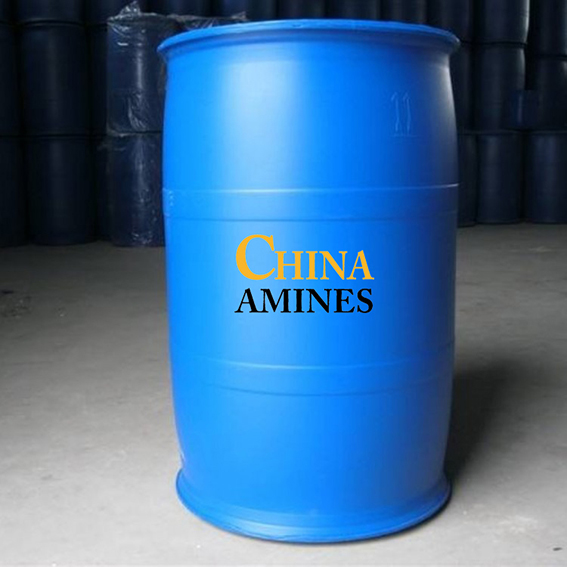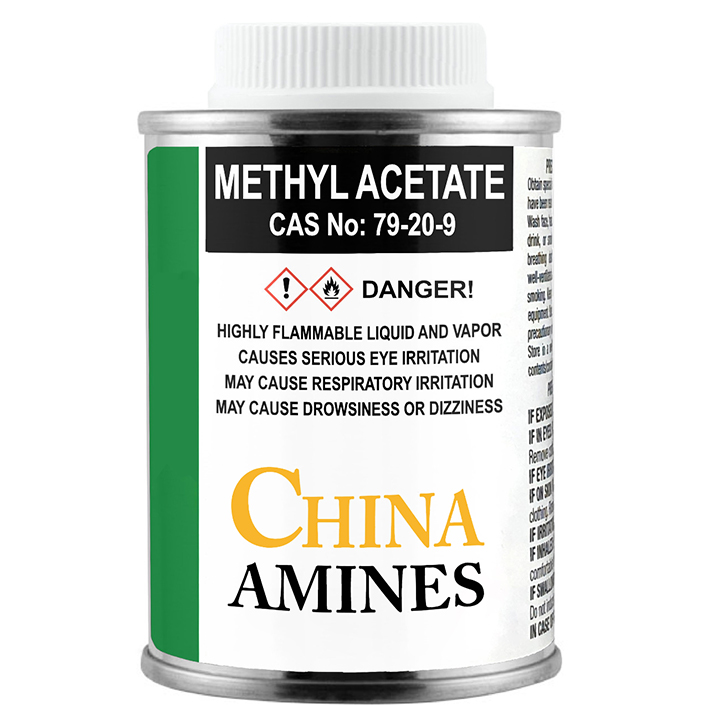1. Chemical Structure and Properties
Molecular Formula: C₃H₆O₂
Structural Formula:
CH₃COOCH₃ – A carboxylic acid ester formed by the esterification of acetic acid and methanol.
Physical Properties:
Appearance: Clear, colorless liquid with a fruity, pleasant odor.
Boiling Point: 56.9°C; Melting Point: -98.1°C
Density: 0.928 g/cm³
Solubility: Miscible with alcohols, ethers, and hydrocarbons; partially soluble in water (3% w/w at 25°C)
Vapor Pressure: 170 mmHg at 20°C
Flash Point: -10°C (highly flammable)
Chemical Properties:
Hydrolysis Stability: Hydrolyzes in acidic/basic conditions to acetic acid and methanol.
Thermal Stability: Decomposes above 280°C, releasing CO₂ and hydrocarbons.
Reactivity: Undergoes transesterification and oxidation reactions.
2. Industrial Applications
Solvent Industry:
Coatings & Inks: High-evaporation solvent for nitrocellulose lacquers, acrylics, and printing inks.
Adhesives: Used in rubber-based adhesives and PVC cements.
Pharmaceuticals:
Extraction Agent: Isolates active pharmaceutical ingredients (APIs) and natural products.
Food & Fragrances:
Flavoring Agent: Implements fruity notes in food products (GRAS status: FDA 21 CFR 172.515).
Chemical Synthesis:
Intermediate: Produces methyl acetoacetate and other specialty esters.
3. Safety and Toxicology
Acute Exposure:
Inhalation (≥400 ppm): Irritates respiratory tract; causes dizziness and CNS depression (TLV-TWA: 200 ppm).
Skin Contact: Mild irritation (rabbit skin LD₅₀: >5,000 mg/kg); negligible systemic absorption.
Ingestion: Low toxicity (oral LD₅₀ rat: 5,450 mg/kg); gastrointestinal distress.
Chronic Effects:
Neurotoxicity: Prolonged exposure linked to methanol release (via hydrolysis), causing optic nerve damage.
Carcinogenicity: Not classified by IARC or NTP; no mutagenicity (Ames test negative).
Protection Measures:
PPE: Nitrile gloves, vapor respirators, and explosion-proof ventilation.
Storage: Store in flame-resistant containers away from oxidizers and heat sources.
4. Environmental and Regulatory Compliance
Environmental Impact:
Biodegradability: Rapid (OECD 301F: >90% degradation in 28 days).
Aquatic Toxicity:
LC₅₀ (fish, 96h): 50–100 mg/L
EC₅₀ (daphnia, 48h): 30–60 mg/L
VOC Classification: Volatile organic compound (VOC) in the EU and USA.
Regulatory Frameworks:
EU: REACH: Registered (EC 201-185-2); CLP classified as Flam. Liq. 2 (H225).
USA: EPA: TSCA-listed; regulated under Clean Air Act for VOC emissions.
FDA: Approved as a food additive (21 CFR 172.515).
China: GB 2760-2014: Permitted as a food flavoring agent.
Waste Management:
Incinerate in licensed facilities with VOC abatement; landfill disposal prohibited.
5. Case Studies and Application Insights
Case 1: Eco-Friendly Paint Formulation (PPG, 2023)
Challenge: Reduce VOC emissions in automotive coatings.
Solution: Replaced 20% of acetone with methyl acetate in waterborne primers.
Result: Achieved 25% lower VOC emissions (ASTM D6886) while maintaining drying speed (ASTM D5895).
Case 2: Pharmaceutical Extraction (Pfizer, 2022)
Process: Used methyl acetate to isolate APIs from plant extracts.
Impact: Improved yield by 15% and reduced solvent waste by 30%.
Comparative Analysis:
Methyl Acetate vs. Ethyl Acetate:
Pros: Faster evaporation; lower toxicity (higher LD₅₀).
Cons: Higher flammability (-10°C vs. -4°C flash point).
Methyl Acetate vs. Acetone:
Pros: Pleasant odor; GRAS status for food use.
Cons: Acetone offers better solvency for polar resins.
Specifications:
Methyl acetate, also known as MeOAc, acetic acid methyl ester or methyl ethanoate, is a carboxylate ester with the formula CH3COOCH3. It is a flammable liquid with a characteristically pleasant smell reminiscent of some glues and nail polish removers. Methyl acetate is occasionally used as a solvent, being weakly polar and lipophilic, but its close relative ethyl acetate is a more common solvent being less toxic and less soluble in water. Methyl acetate has a solubility of 25% in water at room temperature. At elevated temperature its solubility in water is much higher. Methyl acetate is not stable in the presence of strong aqueous bases or aqueous acids. Methyl acetate is not considered a VOC in the USA.



